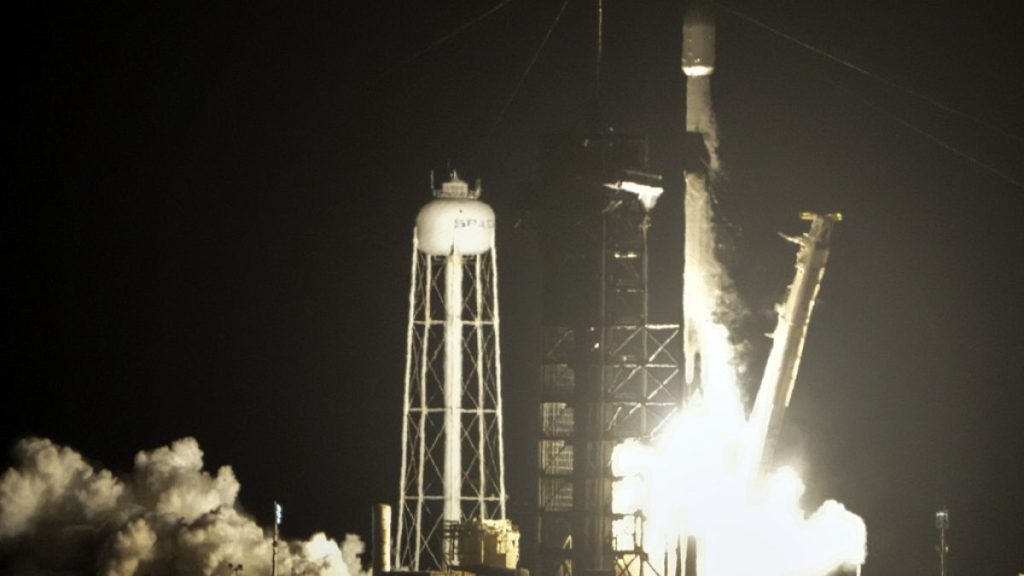Paragraph 1: A Renewed Era of Lunar Exploration
The dawn of 2025 has witnessed a resurgence of interest in lunar exploration, marked by a series of ambitious missions targeting Earth’s nearest celestial neighbor. Both government agencies like NASA and private companies like ispace and Firefly Aerospace are spearheading these endeavors, driven by scientific curiosity, the potential for resource utilization, and the promise of establishing a sustained human presence on the Moon. This renewed focus signifies a pivotal moment in space exploration, building upon the legacy of the Apollo era and paving the way for more complex and ambitious lunar missions in the future.
Paragraph 2: ispace’s Second Lunar Attempt: A Quest for Resources
Japanese lunar exploration company, ispace, embarked on its second attempt to land a spacecraft on the lunar surface in January 2025. This mission, launched aboard a SpaceX Falcon 9 rocket from NASA’s Kennedy Space Center, carries significant weight for the company after a previous landing attempt two years prior ended in failure. The lander, known as Resilience, carries a rover designed to analyze lunar soil and investigate the potential for extracting valuable resources. The success of this mission would not only mark a major milestone for ispace but also contribute valuable data to the growing body of knowledge about the Moon’s composition and resource potential. This information is crucial for future lunar missions and the eventual establishment of sustainable lunar habitats.
Paragraph 3: Firefly Aerospace’s Blue Ghost: Delivering NASA’s Experiments
Texas-based Firefly Aerospace joined the lunar race with its Blue Ghost lander, also launched aboard a SpaceX Falcon 9 rocket. This mission carries a payload of ten scientific experiments for NASA, aimed at advancing lunar exploration technologies and expanding our understanding of the lunar environment. The experiments encompass a range of scientific disciplines and include tools and instruments designed for future lunar surface operations. The successful delivery of Blue Ghost’s payload will significantly contribute to NASA’s Artemis program, which aims to return humans to the Moon and establish a long-term presence there.
Paragraph 4: A Timeline of Lunar Landings: Blue Ghost and Resilience
The two missions, while launched in close temporal proximity, have different target landing dates. Firefly Aerospace’s Blue Ghost is expected to reach the lunar surface first, with a projected landing in March 2025. Ispace’s Resilience, on the other hand, is scheduled to land later, sometime in late May or early June 2025. This staggered landing schedule allows for a broader window of scientific observation and data collection, contributing to a more comprehensive understanding of the lunar environment.
Paragraph 5: The Significance of Private Sector Involvement
The participation of private companies like ispace and Firefly Aerospace in lunar exploration marks a significant shift in the landscape of space exploration. Traditionally dominated by government agencies, the field is now seeing increased involvement from the private sector, fueled by technological advancements and a growing commercial interest in space resources. This collaboration between government and private entities is fostering innovation and accelerating the pace of lunar exploration, creating a dynamic and competitive environment that promises to unlock new scientific discoveries and commercial opportunities.
Paragraph 6: The Future of Lunar Exploration: A Stepping Stone to Deeper Space
The renewed focus on lunar exploration serves not only as a quest for scientific knowledge and resource utilization but also as a crucial stepping stone for future missions to deeper space. The Moon, as Earth’s closest celestial neighbor, provides an ideal testing ground for new technologies and strategies for space exploration, ultimately paving the way for human missions to Mars and beyond. The data and experience gained from these lunar missions will be invaluable in designing and executing future space exploration endeavors, furthering humanity’s reach into the cosmos. The successful completion of these missions will mark a pivotal moment in human history, signifying a new era of space exploration driven by both scientific curiosity and the pursuit of new frontiers.














